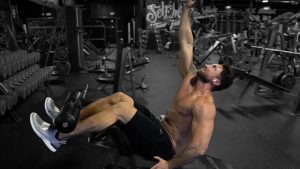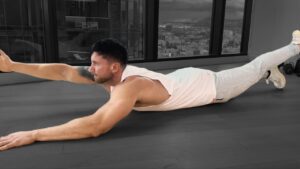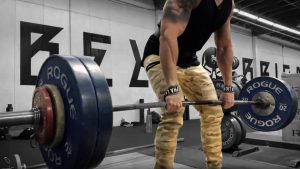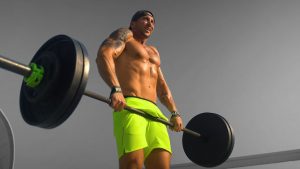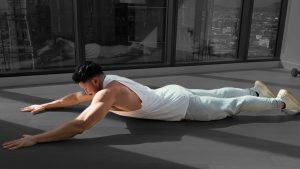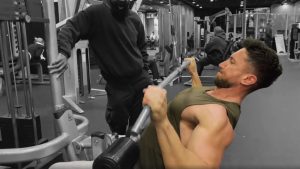The chest supported row is an exercise you can do at the gym, or at home if you have a bench and a barbell. While the name suggests otherwise, it works to target the lats and shoulders. If you’re looking to sculpt your back and shoulders, this workout deserves a spot in your workout routine.
The chest supported barbell row is a very popular compound exercise. It requires a wide range of motion in several areas and uses different muscles to stabilize and support the movement. The row helps you build endurance and works on full-body strength when done in proper form.
Watch the video and read the step-by-step instructions for tips on correct form and execution of the chest supported row!
How to perform the chest supported row
- 1Set up a sturdy incline bench. The ideal angle is between 30 and 45 degrees.
- 2Load up the barbell with the desired weight and place it under the bench. Adjust the bar so that the bench is exactly above its center.
- 3Face the incline bench and rest your chest and torso flat onto it and place your feet flat on the ground.
- 4Next, grab the barbell with your elbows straight and your arms pointing downwards.
- 5Pull the bar upwards slowly, in a way that your arms form a crisp angle of 90 degrees.
- 6Squeeze your shoulder blades and upper back while doing so.
- 7Hold this position for a few moments and gradually release.
- 8Next, lower your arms and maintain a neutral grip on the barbell as you return to the starting position.
Complete at least 3 sets of the barbell chest supported row with 10-12 reps in each set of your strength training sessions. Since this exercise focuses well on the lats, you can effectively strengthen your back and upper torso.
Calculate the exact reps for your barbell rows with this quick and easy One Rep Max Calculator.
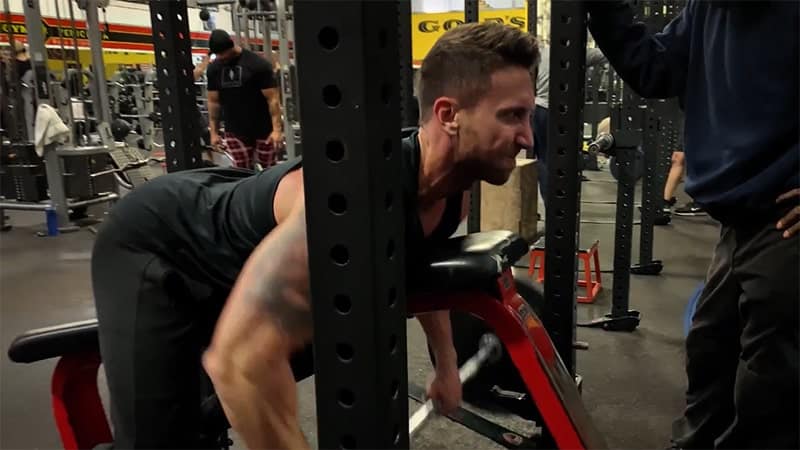
Remember that whether you do the chest-supported row at the gym or home, you got to maintain a precise form.
Pro tip: Never hamper your breathing while performing the row. Always keep your face above the bench’s end. This way, you can breathe easily and complete your rep with ease while maintaining the correct posture. Also, keep your chest flat on the bench with your spine and neck aligned.
Benefits of doing the chest supported row
The chest-supported row is a very effective exercise to build a strong upper torso, lower body, and shoulder blades. While this exercise has multiple fitness benefits, here are the top ones.
Use heavy weights with reduced risk of injury
When you lie down on an incline bench, it is very tough to put the lower back to use. So, when you do the chest-supported row, you often tend to get used to lifting your body weight. It helps you lift heavier weights without risking an injury.
Learn how to work out with correct form
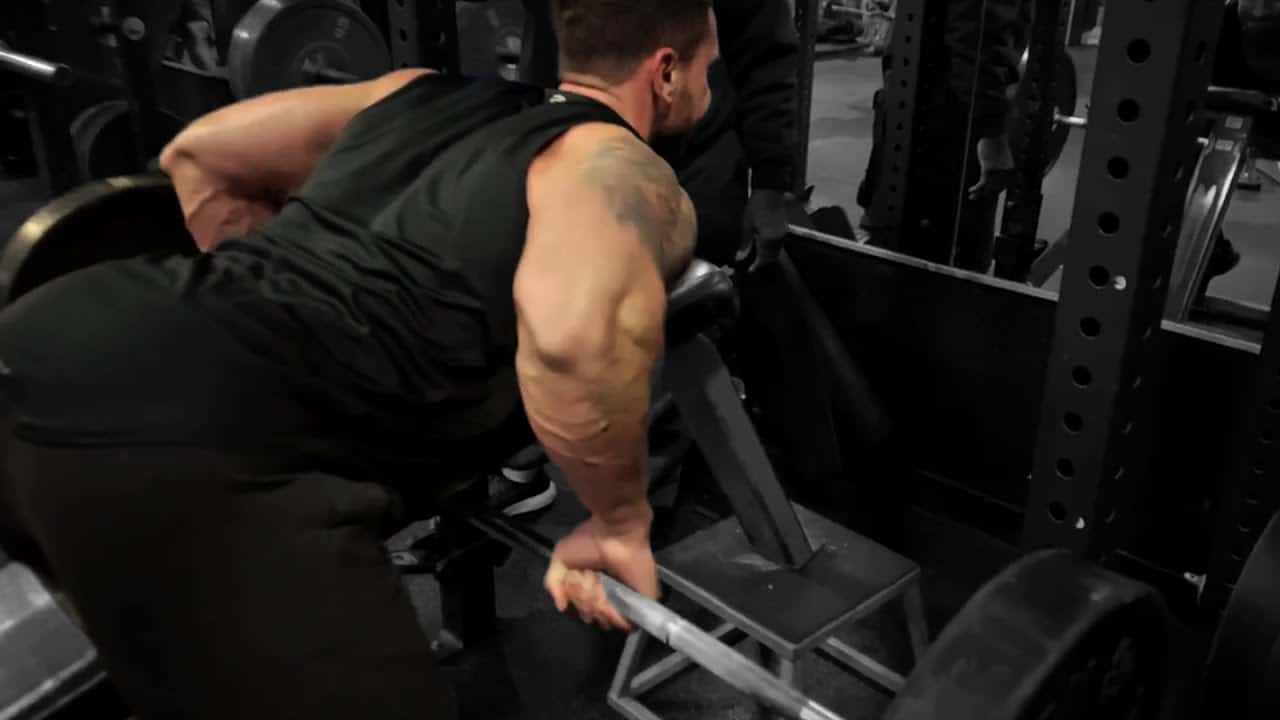
Performing the chest-supported row can help you learn proper form and control. All you need to do is perform the exercise with heavy weights as you keep your shoulder blades close together. It burns your hip-hinge and rhomboids.
You can also use dumbbells to pull tightly against the incline bench for the dumbbell chest supported row. It makes your body aware of the amount of strength and control needed in every move.
Variations help isolate and target specific muscles
The chest supported bent-over row is a great workout, but if you need to spice up your routine, you can try several variations. For instance, the bent-over rows with dumbbells without chest support will require greater effort. Apart from the hip-hinge, back and biceps, you got to work up your core and glutes to maintain the bent-over position.
Limited equipment
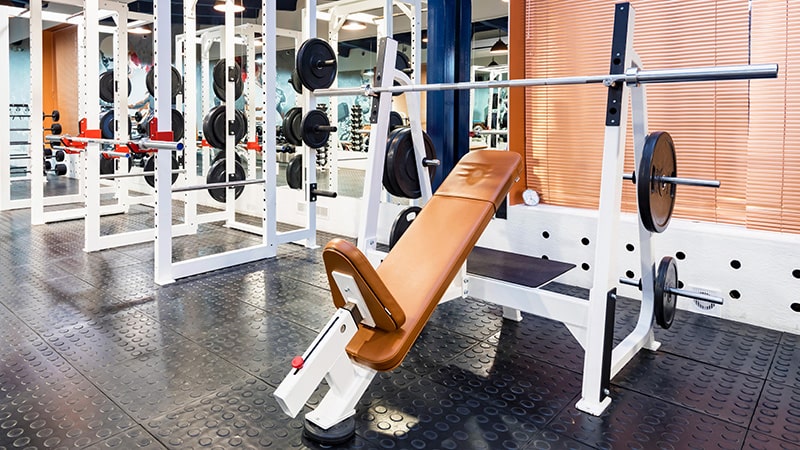
While some of the other back exercises require complex gym equipment, chest supported rows are pretty easy to perform and require limited equipment so you can even do them at home. All you need for this exercise is a bench and a barbell or a set of dumbbells.
Chest supported rows allow a full range of motion
This exercise increases tension in your muscles while allowing complete movement compared to other exercises. Still, if you want to switch, add alternatives like the bent-over row, T-bar row, etc., to your fitness routine.
Isolates back muscles effectively
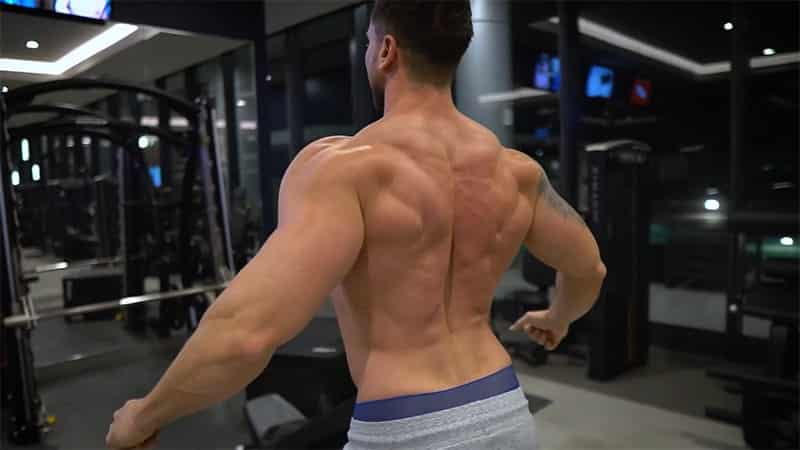
Back exercises like bent-over rows work on secondary muscles like hamstrings and glutes. On the other hand, chest-supported rows focus on your lower and upper back muscles while keeping the spine comfortable and neutral.
People with injuries can perform this easily
Several individuals have a history of back injuries while performing workouts. So, if you have lower back issues or past surgeries and can’t do deadlifts, T-bar rows, and other complex movements, the chest-supported row is ideal for you.
Note: If you develop any aches or pains, consult a medical practitioner immediately. Never compromise on your health!
Alternatives to the chest supported row
T-bar row
This is an excellent variation of the rows for back and shoulders strength and fitness. Here's how to perform the t-bar row:
- 1Add weight to one side of the barbell and fix the other securely in a spot.
- 2Straddle the barbell and clutch the weighted end with a neutral grip, while keeping your arms straight.
- 3Keep your glutes and hamstrings tight with the torso and neck disengaged.
- 4Pull it towards your chest keeping your elbows closer to the body while squeezing your shoulder blades.
- 5Lower the barbell back to the starting position and repeat.
Bent-Over Dumbbell Row
Another variation of the chest-supported row, the bent-over dumbbell row is a classic fitness exercise for an overall strong body. Here are the step-by-step instructions for this exercise:
- 1Hold a dumbbell in each of your hands with an intermediate grip.
- 2Keep your feet hip-width apart and bend your knees.
- 3Hinge at your hips at about 45 degrees.
- 4Begin by fully extended forearms towards the ground.
- 5Pull the dumbbells towards your rib cage in a controlled motion.
- 6Squeeze for a second before rowing downwards.
The chest supported row, bent over or chest-supported dumbbell row, and the T-bar row are all highly beneficial. They help your upper back, lower back, shoulders, and biceps become stronger without the risk of injury.
Modifications: Try the same exercises with a kettlebell or resistance band with or without chest support to add variation to your fitness regimen.
muscles worked by the chest supported row
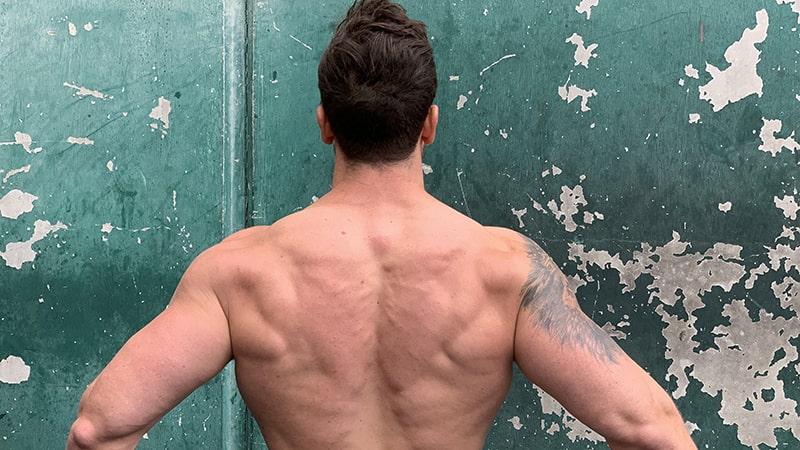
Are you aware that the back comprises different primary and secondary muscles? You work up all your back muscles with the chest supported row. Follow the correct form of rows to focus on your upper back and lower back muscles from the rest of the body.
Here are some of the muscles that are targeted while performing rows:
Summing Up
Regardless of prior pains or injuries, this exercise is an excellent option for isolating back and upper body muscles from your body. The best part is this exercise requires minimum equipment, making your upper body stronger without any hassle. However, it is important to train with proper balance, control, and form.
An incorrect posture may lead to aches and increase the risk of injuries. Watch the video to avoid making mistakes and improve your barbell or dumbbell chest supported row now!

